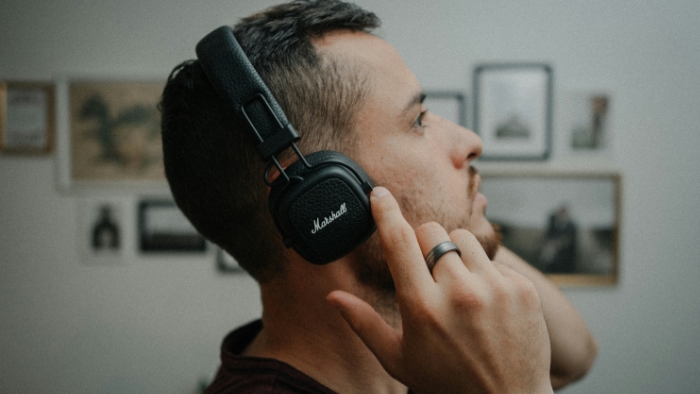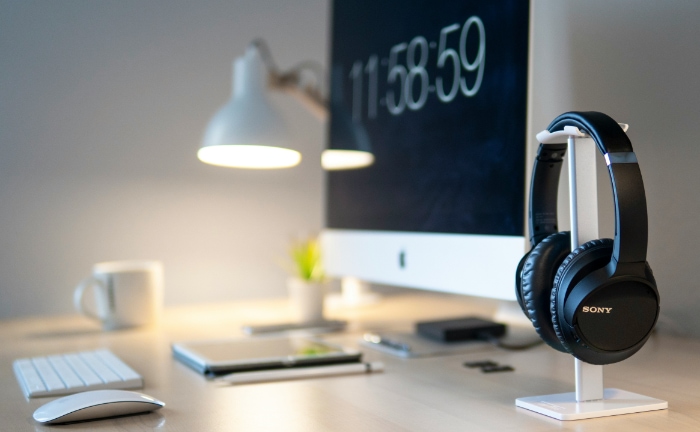Headphones Only Work in One Ear: Your Repair Handbook

Headphones that only work in one ear can transform a seamless audio experience into a lopsided ordeal. You've got your playlist lined up or a podcast episode you've been eager to hear, but when you slip on your headphones, the sound only comes through one side.
It's not just an inconvenience; it disrupts your audio world. This issue, surprisingly common yet often overlooked, can be a real dampener on what should be an enjoyable, immersive listening session.
Identifying the Problem
Before diving into solutions, it's crucial to pinpoint what's causing your headphones to play sound only in one ear. This step is key in determining whether you can fix the issue at home or if it's time to consider a replacement.
We'll go through different aspects to check, from hardware to software, to diagnose the root of the problem.
Hardware or Software Issue
The first step in troubleshooting is to figure out whether the issue is with the headphones themselves (hardware) or with the device they're connected to (software). Simple tests like using your headphones with a different device can give you a quick answer.
If the problem persists across multiple devices, it's likely a hardware issue.
Checking Compatibility
Sometimes, the problem is as straightforward as a compatibility issue. Not all headphones work seamlessly with every device.
Factors like the age of your device, the operating system, and even the headphone model can affect compatibility.
Basic Troubleshooting
Basic troubleshooting should never be overlooked. This includes checking the audio balance in your device's settings, ensuring the headphones are properly plugged in, and restarting your device.
These simple steps can often resolve what seems like a major issue.
Common Causes
Understanding why headphones only work in one ear is essential for finding the right solution. Various factors, from physical wear and tear to software glitches, can lead to this frustrating issue.
By exploring the most common causes, you can get closer to restoring your headphones' full functionality.
Cable Damage
One of the most frequent culprits is damage to the headphones' cable. Over time, regular use can lead to wear and tear.
Twisting, bending, or yanking the cable can cause internal wires to break or fray, disrupting the audio connection. If your headphones have a visibly damaged cable, this could be the source of the problem.
Jack Issues
The headphone jack is another common area where issues can arise. Dirt, lint, or other debris can get lodged in the jack, interfering with the connection between your headphones and the device.
Additionally, a damaged jack – whether on your headphones or your audio device – can lead to audio only playing in one ear.
Internal Wiring
Headphones contain intricate internal wiring that can sometimes become loose or damaged, especially in over-the-ear models. This internal damage can be challenging to detect, as it’s not visible from the outside.
However, it can significantly impact the audio output.
Software Glitches
Lastly, software issues within your audio device can cause uneven audio output. These can range from incorrect audio settings to glitches in the operating system.
While less common than hardware issues, software problems can still lead to one-sided audio and should be considered in your troubleshooting process.
DIY Fixes

When you've identified the possible cause of your headphone woes, the next step is to try some DIY fixes. These solutions are geared towards resolving common issues without needing specialized tools or technical expertise.
Let's walk through some effective methods you can try at home to get both sides of your headphones working again.
Cleaning the Headphone Jack
A dirty headphone jack is a frequent source of audio problems. To clean it, power off your device first.
Then, gently use a cotton swab or a small, soft-bristled brush to remove any dirt or debris. For stubborn grime, slightly dampen the swab with rubbing alcohol, but be careful not to let any liquid drip into the jack.
Inspecting and Repairing Cables
If the issue seems to be with the cable, carefully inspect it for any signs of damage. Look for areas that are frayed, kinked, or exposed.
If you find a damaged spot and are comfortable with minor DIY tasks, you might be able to repair the cable using electrical tape. For more severe damage, soldering might be necessary, which can be a bit more complex.
Adjusting Audio Settings
Sometimes, the solution is as simple as adjusting your device's audio settings. Go into the sound settings and check the audio balance.
Ensure it's set to play evenly through both the left and right channels. Also, if your device has an equalizer, make sure it's configured correctly for your headphones.
Professional Repair or Replacement
Sometimes, the issue with headphones is beyond a simple DIY fix and may require professional attention or even a replacement. This can be especially true for high-end headphones or when the damage is internal and complex.
Let's explore how to decide between professional repair and buying new headphones, and what to consider in each scenario.
When to Seek Professional Help
Knowing when to opt for professional repair is key. If your headphones are high-quality, expensive, or hold sentimental value, and the issue seems complex (like internal wiring problems), it's worth consulting a professional.
Also, if you've tried all the DIY fixes and the problem persists, professional repair might be the next logical step.
Cost-Benefit Analysis
Weighing the cost of repair against the price of a new pair is a practical approach. Sometimes, the cost of repair can be close to, or even exceed, the cost of a new set of headphones.
In such cases, investing in a new pair could be more economical. Consider the age and original cost of your headphones when making this decision.
Choosing Quality Replacements
If replacement seems like the best option, choosing the right pair is crucial. Look for headphones with a strong build quality and good reviews regarding durability.
Consider your usage patterns – whether you need them for casual listening, travel, or professional work – and select a pair that fits your specific needs. Also, factor in warranty and customer support offered by the manufacturer.
Prevention and Maintenance
Preserving the life of your headphones isn't just about fixing them when they break. Preventative care and regular maintenance play a significant role in ensuring your headphones last longer and continue to provide high-quality sound.
In this section, we'll discuss how to properly handle and care for your headphones, reducing the likelihood of encountering one-sided sound issues in the future.
Proper Handling and Storage
The way you handle and store your headphones can greatly impact their longevity. Avoid pulling the cord to unplug them; instead, gently remove them by holding the plug.
When not in use, store your headphones in a case or hang them in a safe place. This prevents the cable from tangling and getting damaged.
Regular Maintenance Tips
Routine maintenance can go a long way in keeping your headphones in good working order. Regularly check the cable for signs of wear, clean the jack and ear pads, and keep the headphones away from extreme temperatures.
This regular check-up can help you spot potential issues before they escalate.
Understanding Warranty and Insurance
Finally, understanding the warranty and insurance options available for your headphones is crucial. Keep your purchase receipt and warranty information in a safe place.
Some manufacturers offer extended warranties or insurance plans for an additional fee, providing coverage for damage that goes beyond normal wear and tear. This can be a worthwhile investment for more expensive headphones.
Conclusion
Headphones only working in one ear is a common problem, but it's often solvable with the right approach. From identifying whether the issue is with the hardware or software, to understanding common causes such as cable damage and jack issues, we've covered essential troubleshooting steps.
DIY fixes can often save the day, but knowing when to opt for professional repair or replacement is also crucial. Beyond immediate fixes, regular maintenance and understanding how to properly care for your headphones can prevent future issues.
Remember, taking good care of your headphones not only ensures a better listening experience but also prolongs their lifespan. So next time you face this audio dilemma, refer back to these tips and strategies to get both sides of your headphones back in harmony.


